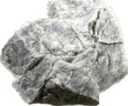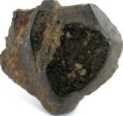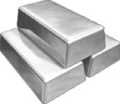4391598091
Cochineal, despite being controversial because of its insect origins, is actually a much healthier alternative to the synthetic azo dyes.
i

n
Chlorophyll copper complexes (E141) — are undergoing extensive research at the moment because preliminary studies have suggested that E141 can prevent certain pollution-induced cancers.
la* 0^0 ( ,
T K
o
n
E104
Ouinoline yellow
Synthetic. Also under scrutiny by the Food Standards Agency for the same reasons as E102.
E123
Amaranth
Synthetic azo dye. Allergenic and thus not recommended for children. Named after a similar-coloured plant with the same name. Banned in USA.
E131
Patent Blue V
Synthetic dye also used in dental tablets to help people brush theirteeth. Banned in Australia and in the USA as a food additive.
E141
Chlorophyll copper complexes
Modified chlorophyll. E141 traps and inactivates cancer-causing pollutants very well. Used in alternative medicine.
E150c
Ammonia caramel
Modified caramel thafs stable in the presence of ammonium compounds. Used in beer, sauces and confectionary.

W

Ł
E100
Curcumin
Found in turmeric roots. Buddhist monks have used E100 to dye their robes for centuries. Stains clothes well.
E110
Sunset Yellow FCF
Synthetic azo dye. The FSA is considering banning E110 because it sometimes contains traces of a carcinogen called Sudan I.
El 24
Ponceau 4R
Synthetic azo dye. Can intensify asthma and elicit intolerance in people allergic to aspirin. Banned in many countries including the USA.
E132
Indigo dye
Has been used to dye jeans blue for centuries. Originally obtained naturally from rare indigo plants, E132 is now produced cheaply in the lab.
E142
Green S
Synthetic. Also used as a vital dye in the lab to stain living cells. Banned as a food additive in Japan, the USA and Canada.
E150d
Sulphite ammonia caramel
Modified caramel thafs stable in the presence of ammonium and sulphite compounds. Gives Coca-Cola its colour.



E101
Riboflavin
Vitamin B2. Adults require at least 1.2mg daily. Deficiency can cause mouth ulcers and a sore throat. Produced by microbes, animals and plants.
E120
Cochineal
Crushed female cochineal insects mixed with alum to produce a crimson-coloured aluminium salt.
E127
Erythrosine
Synthetic. Breaks down above 200°C and releases iodine, which can interfere with thyroid function. Banned in the USA.
E133
Brilliant Blue FCF
Synthetic. Usually mixed with E102 to make green, which is used in processed peas, Listerine mouthwash and Blue Curacao liqueur.
E150a
Plain caramel
Caramel. Melted, slightly burned sugar. E150a isthe most widely-used E-number in the world.

E102
Tartrazine
Synthetic azo dye. Under scrutiny by the Food Standards Agency for possible links with hyperactivity and anxiety.
E122
Azorubine; Carmoisine1
Synthetic azo dye. Under scrutiny by the Food Standards Agency for possible links with hyperacMy in children.

E129
>M|P Allura Red AC
Synthetic azo dye thafs slightly less allergenic than most. Used instead of E123 where E123 is banned.
E140
Chlorophylls
Found in all the green parts of plants (especially in the leaves). E140 dissolved in oil is added to absinthe to give its characteristic green colour.
E150b
Caustic sulphite caramel
Modified caramel thafs stable in the presence of sulphite compounds. Used in cognac and sherry to give colour.
—Electrons in the N=N bond in these azo dyes absorb certain wavelengths of visible light. The different atoms surrounding the N=N bond give each dye its unique absorption spectrum, and thus its unique colour. While they make excellent dyes, ifs best not to eat these azo compounds—studies are increasingly showing that they cause hyperactivity and anxiety and can trigger undesirable side-effects in people intolerant to aspirin.
— Azo dyes are usually madę from the by-products of coal or petroleum (gasoline) production.
E151
Brilliant Black BN
Synthetic diazo dye. Used in desserts, fish pastę and caviar.

E153
Vegetable carbon
Burned vegetable matter. Biochar. Added to liguorice.



E154
Brown FK
Mixture of six synthetic azo dyes. In Europę, E154 is only allowed in one food product: orange smoked kippers.
E160C
Paprika extract
Extracted from Hungarian peppers for over 500 years. When added to chicken feed, it makes their egg yolks morę yellow. Slightly spicy.
E161 b
Lutein
Atype of xanthophyll produced by many plants. Found naturally in spinach. Often added to chicken feed to give egg yolks morę colour.
E170
Calcium carbonate
Limestone. Added to some foods to help retain their colour (e.g. cut, packaged apples). Reduces acidity and also cures diarrhoea.
i
E160d
Lycopene
Plants use lycopene to make carotenoids (E160a).

E160a
Carotenes
Extracted from carrots. E160a is converted to vitamin A in the liver. E160a supplements are known to aggravate lung cancer and improve vision.
E160e
7ra/7s-beta-apo-8’-carotenal
Found in oranges but also in spinach. Precursor compound to vitamin A with similar effects to E160a.

E160b
Annatto
Obtained from annatto tree seeds (also called achiote or Bixa orellana). Used by Native Americans as lipstick, who called it the “lipstick tree”.
E160f
Ethyl beta-apo-8’-carotenate
Modified (esterified) E160e with a redder hue. Also called Food Orange 7.



E174
Silver
Can cause kidney damage and a blue-grey aiscolouration of the face. Do not eat.

E161g
Canthaxanthin
A type of carotenoid first isolated from mushrooms. Often added to salmon feed to make fish morę orange. Key ingredient in “tanning pills".
E171
Titanium dioxide
Also known as Pigment White 6. Widely used as a sunscreen in cosmetics with sun protection. Madę by modifying ilmenite rock.
E175
Gold
Unreactive. Neither harmful nor beneficial if ingested. Just expensive. King Henry VIII liked to put it on toast.

E162
Beetroot Red
* Extracted from beetroot. Added to ice cream, bacon and sausages. Can also be used as a pH indicator (it turns blue at high pH).

E172
Iron oxides and hydroxides
There are 16 pigments in this category, all of which have ‘earthy1 colours. Added to salmon and shrimp pastę.
E180
Lithol Rubine BK
Synthetic azo dye. Added to cheese rinds to colour them red. Ifs also the magenta in your printer’s ink cartridge.
Do not eat.

E163
Anthocyanins
Antioxidant flavonoids that give purple vegetables their colour (e.g. purple corn). Over 300 types of anthocyanins have been identifiea in naturę.
E173
Aluminium
Not reguired in the human diet. Gives a silvery finish to sugar balls used on cakes. Can remove unwanted coloration in water.
—Plant extracts are the healthiest E-numbers. Many are related to vitamin A and vitamin B and are a necessary component of the human diet. Most of these plant extracts are parts of the photosynthetic apparatus.
— Ifs the ability of these plant extracts to absorb light energy for photosynthesis that also gives them their colour.
These are
usually not intended for human consumption. They mostly give colour to sun creams, cosmetics and decorative sugar work such as the little silver beads on cupcakes.
accumulates in the skin and turns grey in sunlight. Ifs also used in those colour-changing sunglasses! This skin disorder is called argyria and can also arise from applying creams containing silver onto the skin.
Sources: wikipedia.org. food.gov.uk. food-info.net. Images from Wikimedia Commons via Wikipedia. Created by James at jameskennedymonash.wordpress.com Contact: jameskennedymonash@gmail.com
Wyszukiwarka
Podobne podstrony:
Chapman Guides garyCHAPMANEverybody Wins The Chapman Guide to Selring Confliets Withaur ArgutngCoNFL
3 3 UelcoMe to Debian GNU/Linux 2.2! This is the Debian Rescue disk. Keep it once pou haue installed
KESKO IS THE MOST RESPONSIBLE FOOD AND STAPLES RETAILER IN THE WORLD In 2015, Kesko rosę to CDP s Cl
11 PM: just one morę YouTube video then l m going to sleep.3 AM: ► m 4) Q O Q □ Wh
P1130043 13.3.1.3 Abdomen and pelvic region The abdominal organ easiest to depict by ultrasono-graph
35 (267) A Practical Guide to Feline Dermatology 1 3 Table 3:1: Identification of the principal
Back to School Logic Puzzle Back To School Logic Puzzle lt is the first day of school and Emma. Bruc
screenshot 1 Back to Wordpress HOME TECH WEBComplete guide to running Photoshop CS6 on Visual Text 2
67 (125) 6 A Practical Guide to Feline DermatologyNocardiosisAetiopathogenesis Nocardiosis is a very
69 (119) 6 A Practical Guide to Feline DermatologyDiagnosis The diagnosis is based on lesion distrib
74 (105) 7 A Practical Guide to Feline Dermatology ulcerated. Lesion distribution is multicentric bu
więcej podobnych podstron